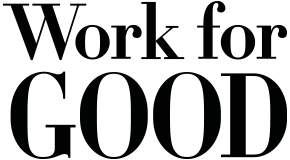Is your recruitment process attracting best-fit candidates?
Do you have an established hiring process? Is it followed by your hiring staff or managers for 90 percent or more of your new hires? And is your hiring process able to identify the best candidates? If not, it may be time to take a look at your hiring practices.
One of the greatest recruiting tools your organization can have is a process: A recipe for success can set everyone up to win, including your selected candidate. To determine whether your hiring process is working or not, you must ask, analyze, and adjust as needed.
If you have a process currently, try asking your managers if they are aware of the process, can explain the process, and know the reasons why it exists. This will help ensure that the process is sound, understood, and of value. Next, ask newly-hired employees what they thought of the hiring process and what, if anything, would have elevated the experience.
If the answers to these questions don’t align with your expectations, it might be time to reassess your hiring process. Consider these questions:
-
Does each step really add value to the overall process?
-
Are the forms we use effective and user-friendly?
-
Does the process keep all relevant parties notified – including those in budget administration, equipment ordering and setup, office space allocation, upper management, and other key areas?
-
Are at least 90 percent of new hires set up on day one with all equipment and tools they need?
-
After we hire, is there attrition or disappointment (from any party) in the first 90 to 180 days?
The best processes will include the criteria for determining whether a need should be filled from inside or outside the organization, the requisition approval steps, the budget and cost review for hiring and recruiting, all steps from job posting to your new employee’s first day, and all surrounding notification and approval steps required to make the recruiting experience smooth for both the company and the candidates. Three tips for establishing that process:
Remove confusion and chaos.
One of the quickest ways to determine whether a process supports your organization’s needs is, first, to assess whether it is followed as designed; and, second, whether it is truly effective. Are people involved in the hiring process confused about the next step, or why a step exists? When there appears to be some level of chaos, it’s a good bet that the process is flawed: It’s not being communicated well, it has steps that are either not valued or not adding value, or the “why” behind certain steps is not understood.
Standardize your practices.
Standardizing practices is like quality control. When everyone understands the practices, both the “how” and the “why,” it helps ensure that candidates are getting the most out of their experience with the company – including, for those who are hired, their first days on the job – and that you have a good reputation in the recruitment world. It will also aid in minimizing any liabilities that can surface during the recruitment process.
Document and communicate.
Documenting and communicating the key steps in any process is always a winning recipe for success. Holding others accountable to the process is fundamental to reaching the desired outcome. When a process is well-established and clearly communicated, little management work is required to ensure people follow all steps accountably. When people are unfamiliar with the process, it likely warrants repeated explanations. Share the reasons behind each step, how they strengthen the hiring experience, and the overall value the process creates, in ways that both managers and candidates can understand and refer back to. When you do that, all parties will be able to make the most of the recruitment and hiring process.
Jennifer Smith is marketing manager at the Unemployment Services Trust (UST), which provides nonprofits with workforce solutions that reduce costs and strengthen missions.
A version of this article originally appeared on ThinkHR, a cloud-based platform that powers the UST HR Workplace, providing UST participants with the expert HR resources they need to reduce overhead costs and stay compliant. You can test-drive the live HR hotline, employee handbook builder, and on-demand training courses by signing up for a free 30-day trial at www.ChooseUST.org/ThinkHR.
Be inspired! Receive fresh hiring insights monthly. Sign up now.



